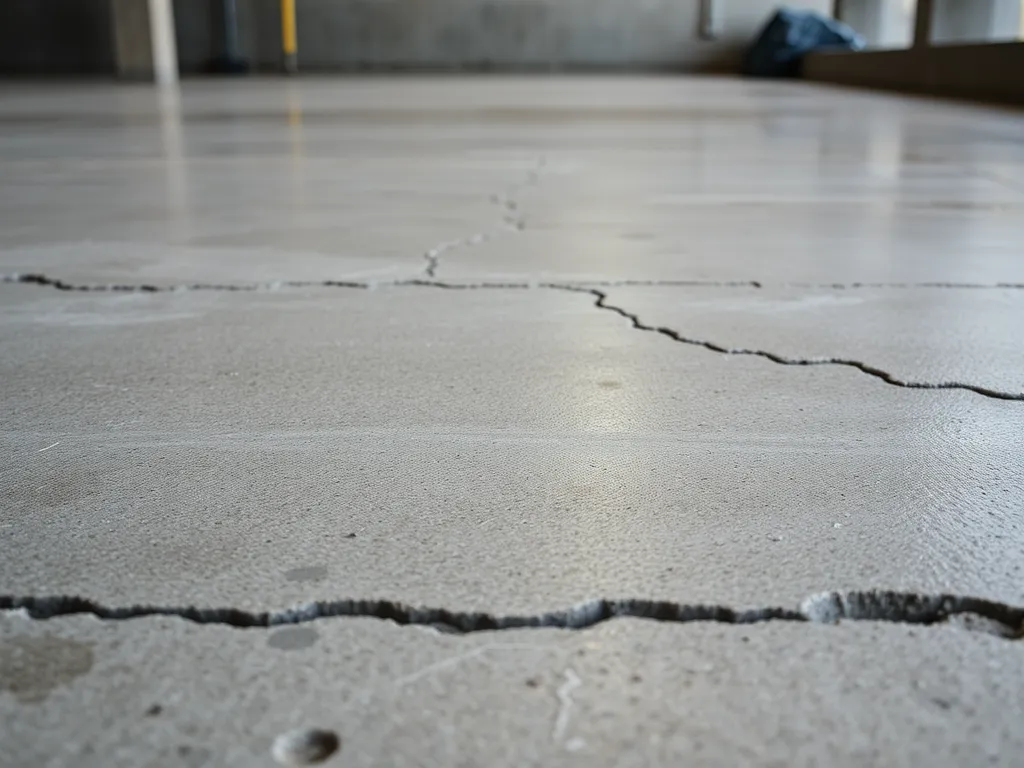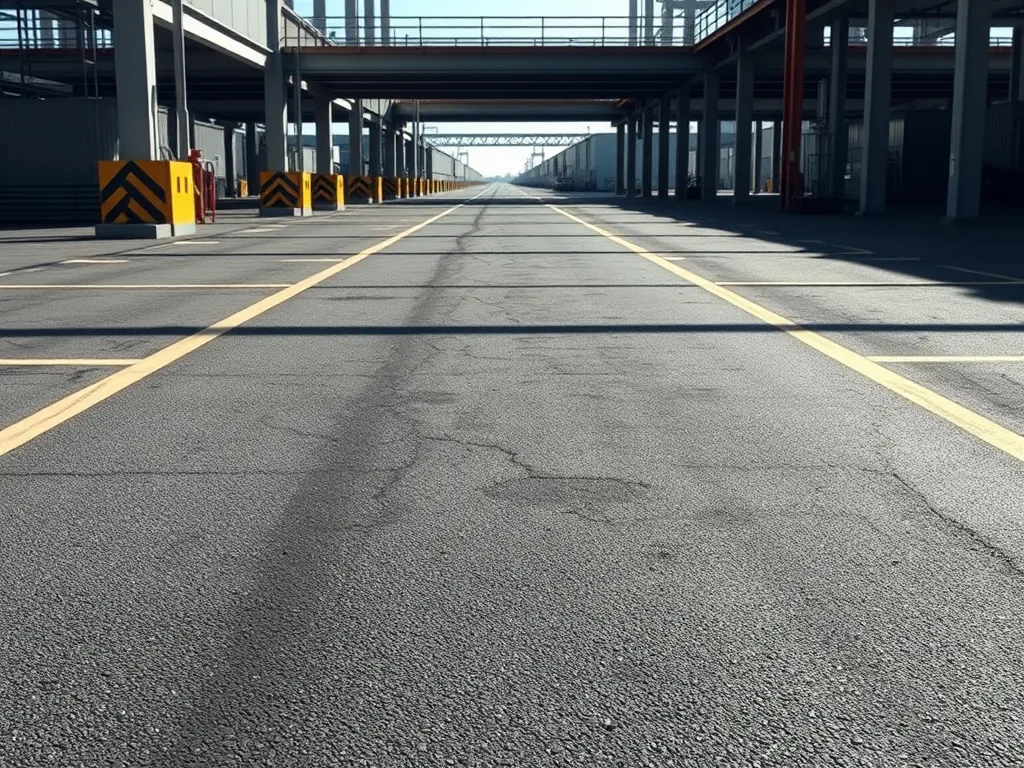Can You Walk on Fresh Asphalt? What You Need to Know
Published on: October 8, 2025 | Last Updated: April 14, 2025
Written By: George Voss
Walking on fresh asphalt is unsafe and risks burns, surface damage, or toxic fume exposure. Freshly laid asphalt reaches temperatures over 300°F during installation and needs 24-48 hours to cool and harden properly. Foot traffic before full curing can leave permanent indentations, disrupt the binding process of bitumen and aggregates, and expose skin to severe burns. Weather conditions like humidity above 50% or temperatures below 70°F may extend curing times by up to 72 hours.
This article explains how asphalt transitions from liquid to solid, safety risks like VOC emissions during curing, and how thickness (1.5-3 inches typical) impacts hardening speed. You’ll get specific wait times for sealed vs unsealed surfaces, footwear tips to prevent damage, and eco-friendly alternatives like warm-mix asphalt that cure faster at 250°F. We’ll also cover how to test surface stability and avoid midday heat when accessing new pavement.
Contents
Understanding Fresh Asphalt Properties
Fresh asphalt has unique traits that impact safety and use. Let’s break down its makeup and how it sets.
What is Fresh Asphalt?
Fresh asphalt is a hot mix of crushed rock, sand, and liquid asphalt (bitumen). Heated to 275-325°F, it’s poured and rolled into smooth sheets. While soft and sticky at first, it hardens as it cools. Walk on fresh asphalt too soon, and you risk burns, dents, or foot marks.
The Asphalt Curing Process Explained
Curing has two phases: cooling and hardening. The top layer firms up in 24-48 hours, but full strength takes 6-12 months. Heat and air trigger a bond between bitumen and rocks. PG binders (performance-graded oils) and Superpave mixes speed this up. Walking on asphalt before it cools below 140°F can leave dips or cracks.
Now that we know how fresh asphalt works, let’s explore the risks of stepping on it too early.
Safety Considerations for Walking on Fresh Asphalt
Walking on asphalt that’s just been put down brings physical and structural risks. Knowing what’s at stake stops injuries and stops harm to your pavement.
Health Risks to Humans
Fresh asphalt isn’t just a hazard for cars. Humans face immediate risks from its high temps and unstable surface.
Exposure to Hot Temperatures & Toxic Fumes
Fresh mix hits roads at 275–325°F. Standing too close can bring skin harm from radiant heat. Hot asphalt also lets off fumes with VOCs (volatile organic compounds), which may trigger headaches or throat irritation in those with breathing issues.
Skin Burns from Fresh Asphalt Contact
Direct touch with new pavement causes third-degree burns in under 3 seconds. Sticky bitumen (the glue holding asphalt) can cling to skin, making injuries worse. Work boots with thick soles won’t fully shield against 300°F surfaces.
Risk of Footprints or Sinking in Soft Surfaces
Until it cools below 140°F, asphalt acts like thick tar. Walking on it leaves dents up to ¼” deep. This ruins smooth finishes and traps water, speeding up cracks. Kids or pets sinking in risk burns from trapped heat.
Structural Risks to Asphalt
Walking too soon doesn’t just hurt people—it weakens pavement. Asphalt needs time to build strength through full cooling and binding.
Surface Warping from Premature Use
Foot traffic before curing stops proper thermal contraction. This creates ripples or waves, particularly in slabs under 2” thick. Fixing warped sections costs $3–$7 per sq.ft. for grinding or patching.
Indentations from Foot Traffic
Footprints compress aggregate particles before binders set. This loosens the mix, causing early raveling (stone loss) and reducing pavement lifespan by up to 15%. High-traffic zones like driveways need at least 24 hours without foot activity.
Now that you know the risks, timing your first steps right matters. Up next: how long to wait based on climate, mix type, and installation methods.

Curing Time: When Can You Safely Walk?
Fresh pavement needs time to set before foot traffic is allowed. Rushing this process risks both personal injury and surface damage. Let’s break down timelines and variables influencing readiness.
General Waiting Period After Paving
Most contractors recommend staying off new pavement for 24-72 hours. Temperatures below 50°F extend this window to 3-5 days. While the top layer hardens within hours, full structural stability takes longer. Light foot traffic is often possible once the surface feels firm and no longer emits heat or odors.
Factors Affecting Curing Time
Two primary elements dictate how quickly pavement becomes walkable: environmental conditions and material properties.
Weather Conditions (Heat, Humidity, Rain)
Hot, dry weather speeds curing—walking might be safe in 18-24 hours if temperatures exceed 70°F. High humidity slows evaporation, adding 12-24 hours to the wait. Rain within 6 hours of installation can wash away binders, requiring repairs before use.
Asphalt Thickness and Mix Composition
Thicker layers (4+ inches) need 48+ hours to cool versus 24 hours for 2-inch surfaces. Polymer-modified mixes or those with PG 76-22 binders set faster due to higher viscosity. Recycled mixes containing RAP might cure slower depending on reclaimed material ratios.
Sealed Asphalt Vs. Freshly Paved: Key Differences
Sealcoating—a protective emulsion applied post-cure—has distinct guidelines. Unlike fresh pavement, sealed surfaces need shorter waiting periods but still require care.
24-48 Hour Rule for Sealcoated Surfaces
Sealants form a thin, fast-drying barrier. Most cure fully within 24 hours in optimal conditions (75°F, low humidity). Foot traffic can resume once the coating loses its glossy sheen. Heavy rain or temperatures below 55°F push this to 48 hours.
Now that we’ve covered safe timing, let’s explore methods to test surface readiness before stepping out.
Also See: Importance Of Proper Base Preparation for Longevity
Best Practices for Walking on Fresh Asphalt
Follow these steps to keep safe and protect new asphalt surfaces.
Wait Until Fully Cooled and Firm
Let the asphalt cool for 24-48 hours. Fresh mix stays hot (275-300°F) after paving. Wait until it feels hard to the touch. Walk too soon, and soft spots may form.
Test Surface Stability Before Full Use
Press a shoe heel lightly on the edge. If no mark forms, it’s safe to walk. Check high-traffic zones like driveways twice. Still soft? Wait 2-3 more hours.
Proper Footwear Requirements
Wear thick-soled boots or sneakers. These guard feet from heat and shield the asphalt from dents. Never use flip-flops or sandals.
Avoid Thin-Soled Shoes or Bare Feet
Thin soles let heat pass through fast. Bare skin can burn in seconds on 140°F+ asphalt. Use closed-toe shoes with rubber soles ½ inch thick or more.
Avoid Midday Heat Exposure
Walk early morning or late afternoon. Asphalt temps peak between 10 AM-4 PM. Hot sun softens the surface, raising risks of marks or burns.
Next, we’ll explore how fresh asphalt affects air quality and eco-friendly options to cut VOC levels.

Environmental Impact Of Fresh Asphalt
While safety risks dominate discussions about walking on fresh asphalt, environmental factors also play a role. Newly laid pavement releases chemicals and affects ecosystems – issues amplified when surfaces are disturbed during curing.
Volatile Organic Compound (VOC) Emissions
Fresh asphalt emits VOCs – carbon-based chemicals like benzene and toluene – as bitumen (the binding petroleum component) cools. These fumes peak within 2-4 hours post-installation, creating health hazards for anyone walking nearby. VOC levels rise with temperature:
| Surface Temp | VOC Emission Rate |
|---|---|
| 120°F (49°C) | 12.7 µg/m²/hr |
| 140°F (60°C) | 29.3 µg/m²/hr |
PG (Performance Graded) binders modified with polymers can reduce VOC emissions by 18-22%. Still, contractors recommend avoiding foot traffic until temperatures drop below 100°F (38°C) to limit inhalation risks.
Eco-friendly Asphalt Alternatives
New formulations minimize environmental harm while accelerating walkability timelines:
| Type | Features | Curing Time |
|---|---|---|
| Warm-Mix Asphalt | Made at 30-120°F lower temps; cuts VOCs by 50% | Walkable in 2-3 hours |
| Recycled Asphalt (RAP) | Contains 20-40% reused materials; fewer emissions | Same-day use possible |
| Porous Asphalt | Allows water drainage; cools faster | 1-2 hour wait |
Bio-based binders using soybean or pine resins are gaining traction. These alternatives often reach safe walking temperatures 30% faster than traditional mixes.
With eco-options reducing risks, attention shifts to practical access guidelines. Next, we’ll break down exact waiting periods for different asphalt types.
Frequently Asked Questions
Is Asphalt Safe to Walk on After Installation?
No, freshly laid asphalt is not safe to walk on immediately after installation due to high temperatures and the risk of burns, as well as the potential for damaging the surface.
How Long Should You Wait Before Walking on Fresh Asphalt?
Typically, it is advised to wait at least 24 to 72 hours after paving before walking on fresh asphalt, depending on environmental conditions and the thickness of the asphalt layer.
How Long to Stay Off Freshly Sealed Asphalt?
For freshly sealed asphalt, it is generally recommended to stay off the surface for 24 to 48 hours to allow the sealant to cure properly.
Can Walking Too Soon Damage New Asphalt?
Yes, walking on new asphalt too soon can leave footprints or indentations, leading to permanent damage, as well as affecting the overall curing process.

Closing Thoughts
Walking on fresh asphalt is tempting, but it’s important to prioritize safety. Fresh asphalt, while durable, needs time to cure and cool. Walking on it too soon can cause burns, damage the surface, or create unwanted footprints.
Generally, it’s best to wait at least 24 hours. However, factors like weather and asphalt thickness can extend this period. Always test the surface stability before stepping on it, and wear appropriate footwear to avoid injuries.
For more insights and tips about asphalt projects, visit Asphalt Calculator USA.
Additional Resources for You:
- The Asphalt Institute. (2007). MS-4: The Asphalt Handbook. Lexington, KY: Asphalt Institute.
- Parking On A New Asphalt Driveway (3 Essential Guidelines)
- Average Asphalt Driveway Drying Time: How Long To Wait To Drive Over New Asphalt – Limitless Golden Construction


